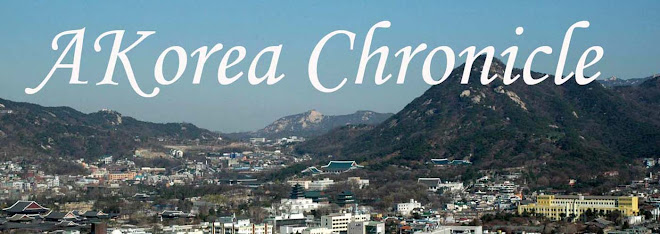The dress that I am wearing in my profile is a Korean hanbok. It is very special to me
it was made especially for me by Korean friends. It is a treasure and it will always remind me of my special time in Korea. I have since learned that it is the color for newlyweds and it is said that if a man wants to mold his wife the way he would like her to be, that he should do it while she is wearing a red skirt. (I should add that so far this is NOT working at my house and I am a "newlywed" who has been married for 35 years)but it is fun.
Here is some additional background information on the the hanbok
The following information on Korean Traditional dress was found
 in the following website
in the following websitehttp://www.clickasia.co.kr/aboutf2.htm
The Korean costume is called hanbok. It is characterized by simple lines and no pockets. The women¡¯s hanbok comprise a wrap skirt and a bolero-like jacket, and the men¡¯s, roomy pants bound at the ankles and a short jacket. Hanbok are worn by Koreans of all ages, particularly on traditional holidays and when attending social affairs having a Korean overtone.
Some of the basic elements of today¡¯s hanbok, namely the jacket (chogori) and pants (paji), were probably worn at a very early date, but it was not until the Three Kingdoms period (57 B.C.-A.D.668) that the two-piece costume of today began to evolve. Short, tight trousers and tight, waist-length jackets were worn by both men and women during the early part of the period as evidenced by ancient tomb paintings.
Toward the end of the Three Kingdoms period, T¡¯ang China introduced Koreans to silk mandarin robes and they were adopted for wear by royalty and officials. Noblewomen began to wear full-length skirt-trousers and wide-sleeved, hip-length jackets belted at the waist and noblemen began to wear roomy trousers bound in at the ankles and a narrow, tunic-style jacket cuffed at the wrists and belted at the waist.
| In the late thirteenth century Koryo, the kingdom that ruled Korea from 918-1392, became a vassal state of Mongolia during the Mongol Chinese Yuan Dynasty. Its twenty-fifth ruler, Ch¡¯ungnyol-wang (r.1274-1308), took as his wife a princess from the court of Kubla Khan and began dressing in Mongol fashion. It is said that within three years of his ascendance to the throne, every official in the Koryo court had shaved his head except for a patch of hair in the middle and had adopted the dress of the Mongolian plains people. During the short time Koryo was a Mongol vassal, three kings were born to Korean-Mongolian queens, which had quite an effect on the social and fashion trends of the times. The skirt (ch¡¯ima) was shortened as was the vest (chogori), which was hiked up above the waist and tied at the chest with a long, wide ribbon instead of belted and the sleeves were curved slightly. The upper classes wore hanbok of closely woven ramie cloth or other high-grade lightweight materials in warm weather and of plain and patterned silks the rest of the tear. Commoners were restricted by law as well as resources to cotton at best. The upper classes wore a variety of colors, though bright colors were generally worn by children and young girls and subdued colors by meddle-aged men and women. Commoners were restricted by law to everyday clothes of white but for special occasions they wore dull shades of pale pink, light green, gray and charcoal. |


1 comment:
Hi Cindy
The hanbok pictures are lovely. Even in all the fabrics and colors, one can still see the traditional form. What is with the one-sided bow? I thought yours was just crooked!
Becky
Post a Comment